The New Yorker Book of Technology Cartoons
Robert Mankoff, The Cartoon Bank
Technology — friend or foe? That's a question the cartoonists of The New Yorker have been pondering with no little skepticism — and answering hilariously — for decades.
From "portable phones" that were anything but to tiny cell phones, from room-sized computers to handheld wonders, from faxes to e-mails, the brilliant artists of The New Yorker have seen and drawn it all — the sublime, the ridiculous, and the existential.
Bob Mankoff, cartoon editor of The New Yorker, has culled through thousands of drawings to select the best, the funniest, and the most illuminating cartoons on technology for this collection of 126 cartoons. Readers can also look forward to Mankoff's witty introductory essay.
1576600750
Ultra 3-D
W. Mark
Images composed of apparently random patterns of marble swirls and colorful brushstrokes are transformed as the viewer stares at them, becoming detailed pictures with remarkable depth—illusions so convincing it appears that the viewer can reach into the pictures.
1567140254
The Campfire Collection: Spine-tingling Tales to Tell in the Dark
Eric B. Martin
The sun has set, the campfire is lit, and dark night presses in—suddenly, the wilderness seems very big and very scary. In the good old-fashioned tradition of story-telling, The Campfire Collection offers twenty-five spine-tingling tales, both true and fictional, of the human experience in the great outdoors. From beastly attacks, to brushes with death and supernatural encounters, this anthology captures the cruel, sometimes macabre, side of Mother Nature. And it isn't pretty. Haruki Murakami describes a life destroying tsunami, and Cynthia Dusel-Bacon gives an agonizingly detailed account of being mauled by a bear. Rounded corners and durable cover make this a suitable companion for any overnight excursion, and large type means easy radin by campfire or flashlight. Whether you're just pitching a tent in the backyard or all the way up on the top of Mount Everest, The Campfire Collection is a chilling read from writers who have lived to tell.
0811824543
Wine for Dummies
Ed McCarthy, Mary Ewing-Mulligan
In Wine for Dummies, Mary Ewing-Mulligan teams up with hubby and fellow wine educator Ed McCarthy to guide us on an exhaustive, entertaining trip around the enological—that—that's right, enological—world. Though clearly experts themselves (Ewing-Mulligan is one of a handful of Americans holding the rare title Master of Wine), the authors assure us that even the most basic knowledge will undermine the very notion of wine pretension. It's as simple as this: "This wine is named for a grape variety. This wine is named for a geographical region. When they make this kind of wine, it goes into this kind of bottle." And so on.
By providing the context in which to begin exploring wine, Wine for Dummies can easily become the send-off for a lifelong education. McCarthy and Mulligan deflate many of the wine snob's attitudes; they assure us that most wine sold today is "good wine," and that any further distinctions made about wine are ultimately subjective. The practical, jovial mentoring the authors provide encourages readers to chart their own course toward drinking great wine (although the authors naturally recommend dozens of their own favorites along the way). In later chapters, McCarthy and Mulligan delve into more serious topics such as investing in and cellaring wine. Even these discussions seem appropriate, given that you'll probably find the allure of wine growing as its mystery subsides to the force of this superb introductory text. —Todd Gehman
1568843909
|
Decoding Egyptian Hieroglyphs: How to Read the Secret Language of the Pharaohs
Bridget McDermott
For beginners and Egyptologists alike, reading hieroglyphs provides fascinating insights into the land and lore of the pyramids. Decoding Egyptian Hieroglyphs is the only fully illustrated, easy-to-use guide to the meaning and mystery behind this ancient language. A history of hieroglyphs and instructions for how to read them are complemented by vocabulary lists and photographs of real inscriptions. In each chapter, skill-building exercises weave together with details of Egyptian life. Who could have imagined that the sign for the word "millions" is a lizard because Egypt was once overrun with reptiles? Hieroglyphs literally paint portraits of the ancients, depicting everyone from the pharaoh in his court to the farmer along the flooded Nile. Decoding Egyptian Hieroglyphs reveals the beauty and hidden marvels of one of the world's most intriguing cultures.
0811832252
The Rough Guide to Germany 5
Gordon McLachlan
INTRODUCTION
Germany has always been the problem child of Europe. For over a millennium it was no more than a loose confederation of separate states and territories, whose number at times topped the thousand mark. When unification belatedly came about in 1871, it was achieved almost exclusively by military might; as a direct result of this, the new nation was consumed by a thirst for power and expansion abroad. Defeat in World War I only led to a desire for revenge, the consequence of which was the Third Reich, a regime bent on mass genocide and on European, indeed world, domination. It took another tragic global war to crush this system and its people. When the victors quarrelled over how to prevent Germany ever again becoming dominant, they divided it into two hostile states; the parts held by the Western powers were developed into the Federal Republic of Germany, while the eastern zone occupied by the Soviets became the German Democratic Republic.
The contest between the two was an unequal one the GDR, never able to break free from being a client state of the Soviet Union and forced to adopt a Communist system at odds with the national character, had fallen so far behind its rival in living standards that in 1961 the authorities constructed the notorious electrified barbed-wire frontier, with the Berlin Wall as its lynchpin, to halt emigration the first time in the history of the world that a fortification system had been erected by a regime against its own people. Thereafter, the society settled down, but the GDR was a grey, cheerless place whose much trumpeted economic success was a mirage, and bought at the price of terrible pollution problems.
On the other hand, the Federal Republic which was seen as the natural successor to the old Reich, if only on account of its size had not only picked itself up by the bootstraps, but developed into what many outsiders regarded as a model modern society. A nation with little in the way of a liberal tradition, and even less of a democratic one, quickly developed a degree of political maturity that put other countries to shame. In atonement for past sins, the new state committed itself to providing a haven for foreign refugees and dissidents. It also became a multiracial and multicultural society even if the reason for this was less one of penance than the self-interested need to acquire extra cheap labour to fuel the economic boom. A delicate balance was struck between the old and the new. Historic town centres were immaculately restored, while the corporate skyscrapers and well-stocked department stores represented a commitment to a modern consumer society. Vast sums of money were lavished on preserving the best of the countrys cultural legacy, yet equally generous budgets were allocated to encouraging all kinds of contemporary expression in the arts.
Officially, the Federal Republic was always a "provisional" state, biding its time before national reunification occurred. Yet there was a realization that nobody outside Germany was really much in favour of this. "I love Germany so much Im glad there are two of them", scoffed the French novelist François Mauriac, articulating the unspoken gut reactions of the powers on both sides of the Iron Curtain. German division may have been cruel, but at least it had provided a lasting solution to the German "problem". Such thinking was rendered obsolete by the unstoppable momentum of events in the wake of the Wende, the peaceful revolution that toppled the Communist regime in the GDR in 1989, leading to the full union of the two Germanys less than a year later. Yet initial euphoria has been quickly replaced by concern about the myriad problems facing the new nation as it attempts to integrate the bankrupt social and economic system of the GDR into the successful framework of the Federal Republic. While Germany may officially be one again, it will certainly continue to look and feel like two separate countries until the end of the century and probably well beyond. Moreover, international pressure has ensured that, far from being a re-creation of the old Reich, it can be no more than the nineteenth-century concept of a Kleines Deutschland ("little Germany"), excluding not only Austria but also the "lost" Eastern Territories, which are now part of Poland, the Czech Republic and the Russian Federation.
In total contrast to Germanys intrinsic fascination as the country which has played such a determining role in the history of the twentieth century is its otherwise predominantly romantic image. This is the land of fairy-tale castles, of thick dark forests, of the legends collected by the Brothers Grimm, of perfectly preserved timber-framed medieval towns, and of jovial locals swilling from huge foaming mugs of beer. As always, there is some truth in these stereotypes, though most of them stem from the southern part of the country, particularly Bavaria, which, as a predominantly rural and Catholic area, stands apart from the urbanized Protestant north which engineered the unity of the nation last century and thereafter dominated its affairs.
Regional characteristics, indeed, are a strong feature of German life, and there are many hangovers from the days when the country was a political patchwork, even though some historical provinces have vanished from the map and others have merged. More detail on each of the current Länder, as the constituent states are now known, can be found in the chapter introductions. Hamburg and Bremen, for example, retain their age-old status as free cities. The imperial capital, Berlin, also stands apart, as an island in the midst of the erstwhile GDR where the liberalism of the West was pushed to its extreme, sometimes decadent, always exciting. In polar opposition to it, and as a corrective to the normal view of the Germans as an essentially serious race, is the Rhineland, where the great rivers majestic sweep has spawned a particularly rich fund of legends and folklore, and where the locals are imbued with a Mediterranean-type sense of fun. The five new Länder which have supplanted the GDR, and in particular the small towns and rural areas, are in many ways the ones which best encapsulate the feel and appearance of Germany as it was before the war and the onset of foreign influences which were an inevitable consequence of defeat.
1858287065
Yosemite Valley Free Climbs: Supertopos
Chris McNamara, Steve Roper, Todd Snyder, Greg Barnes
Yosemite Valley Free Climbs by Chris McNamara includes over 230 of the best routes in Yosemite Valley from 16-pitch trad climbs to one-pitch sport routes. While many hard Yosemite testpieces are included, this book focuses on topropes, crags, and multi-pitch climbs in the 5.4-5.9 range. Includes formerly obscure climbs to provide more options for avoiding crowds. As in all SuperTopo books, the authors personally climbed and documented each climb with meticulous care to create the most detailed and accurate topos ever published.Features: The book covers over 230 classic routes from sport climbs to multi-pitch trad climbing . It includes detailed approach, decent, strategy and retreat information. There are sample itineraries for getting the most of your trip. It also includes accurate and detailed topos as well as first ascent history.
0967239141
This Ain't Hell... But You Can See It From Here! A Gulf War Sketchbook
Barry McWilliams
During Operation Desert Storm hundreds of journalists reported from Saudi Arabia and Kuwait, covering every troop movement and missile attack. Barry McWilliams was there also, but as the only professional cartoonist to tour the Gulf War theater, his approach was a bit different. Here is his collection of tall tales and humorous stories, illustrated with 115 witty drawings.
0891414436
The Sixth Fleet
David E. Meadows
In the near future, the United States is no longer a dominant superpower. Countries that were once allies now race to establish their own influence around the globe. Slowly but surely, America is becoming a shadow of its former glory. But America's old enemies aren't content to see her fade away. They want revenge.
0425180093
|

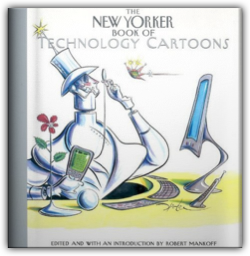

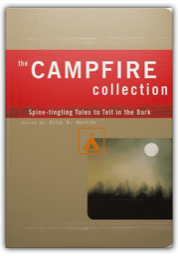

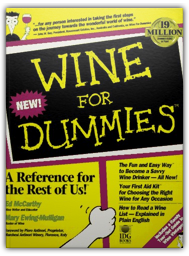
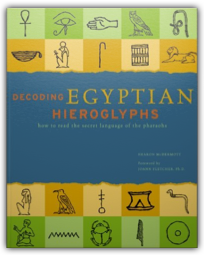
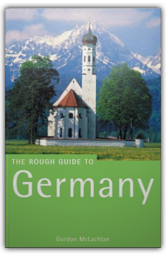
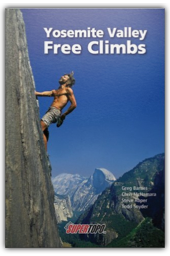
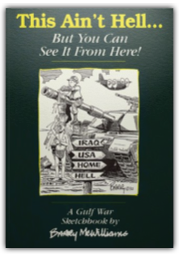
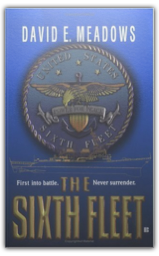




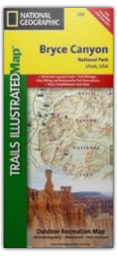
 Made with Delicious Library
Made with Delicious Library